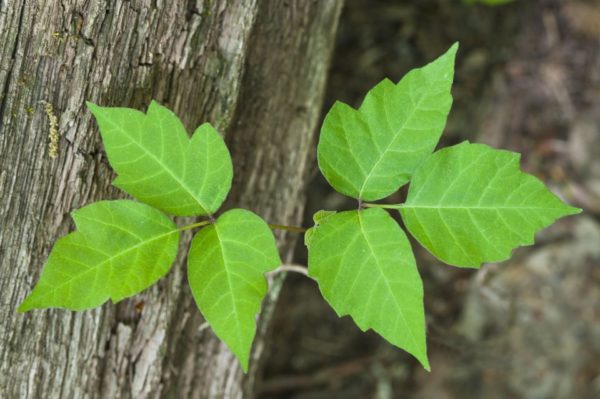 Earth Matters focuses on conservation, sustainability, recycling and healthy living.
Earth Matters focuses on conservation, sustainability, recycling and healthy living.
If Earth Matters to you, sign up for our mailing list and get the next installment delivered bright to your inbox.
by Dr. Asma Khan
For those of us who enjoy spending time in the great outdoors, it’s important to know how to treat poison ivy rashes. The best treatment, of course, is to teach yourself and your children how to recognize these and other unfriendly plants and stay away from them. But in case you do have a brush with poison ivy this summer, we’re here to help.
“Poisonous” Plants
Poison ivy, poison oak, and poison sumac are plants that grow in wooded or marshy areas throughout North America. Poison ivy and poison oak grow as vines or shrubs, while poison sumac is a woody shrub or tree. These plants aren’t really poisonous. Rather, they have a sticky, long-lasting oil called urushiol that causes an itchy, blistering rash to form after it touches your skin. Even slight contact, like brushing up against the leaves, can leave the oil behind.
About 5% to 10% of people are not allergic to poison ivy and will never get a rash from it. Many others may not get a rash after first contact but will break out after further exposure. If a rash develops, it usually appears in streaks one to four days after contact and heals within two to three weeks.
 Rash Treatment at Home
Rash Treatment at Home
If you or your child has been exposed to poison ivy, gently wash the affected area for several minutes with warm, soapy water. There is no need to scrub the skin harshly. Remember to also wash all clothes, shoes, and pets that may have come in contact with the plant, as the urushiol oil can easily spread from clothes to other surfaces.
If you or your child develop a rash, start treatment at home using these tips:
- Apply calamine lotion three to four times a day to help calm the itch
- Apply an over-the-counter hydrocortisone cream to decrease inflammation
- Take a cold bath or oatmeal bath to soothe the rash
- Apply a cool, wet compress to help dry up any oozing areas
- Try an oral antihistamine to reduce itchiness at night
- Keep your fingernails trimmed to prevent harsh scratching on your skin
Do I Need to See a Doctor?
In some cases, it is possible for a poison ivy rash to escalate to the point of needing to see a doctor. Seek medical attention if any of the following occurs:
- The rash isn’t responding to any at-home treatments
- You sustain severe rash on the face
- Fever
- Signs of infection, such as oozing
- Extreme itchiness
- Unable to use your hands, or use the bathroom, due to the rash
- You have had severe reactions to poison ivy in the past
Poison Ivy: What You Need to Know
The mildest form of rash caused by poison ivy, poison oak, and poison sumac consists of small, red, itchy bumps that resemble hives. More commonly, clusters of small blisters develop, usually with clear fluid inside. Any clear fluid that oozes from the blisters does not contain any urushiol oil and cannot spread the rash to anyone else.
Prescription treatments for poison ivy rash are usually creams and oral medicines that are in the hydrocortisone family but are much stronger than the hydrocortisone cream that you can buy over the counter.
Enjoy your summertime hikes, but steer clear of those poison ivy patches!
 Asma Khan, MD, is the Clinical Director at HRHCare Urgent Care, 84 N Highland Ave between High Street and Sickles Ave in Nyack. Along with offices in Haverstraw and Spring Valley, the facility is part of the 28 health center HRHCare network in the Hudson Valley and Long Island providing comprehensive primary care.
Asma Khan, MD, is the Clinical Director at HRHCare Urgent Care, 84 N Highland Ave between High Street and Sickles Ave in Nyack. Along with offices in Haverstraw and Spring Valley, the facility is part of the 28 health center HRHCare network in the Hudson Valley and Long Island providing comprehensive primary care.
Read Earth Matters every Wednesday on Nyack News And Views, or sign up for the Earth Matters mailing list.
Earth Matters focuses on conservation, sustainability, recycling and healthy living.








